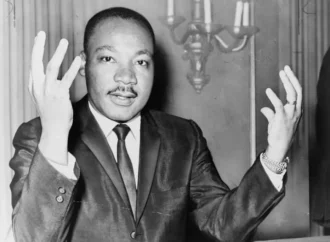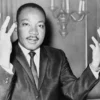Have you ever asked yourself, what makes someone an entrepreneur of ideas, a so-called thought leader? The ability to invent and spread the word about newfangled concepts? A master of the TED Talk? A magnetic Steve Jobs-like personality?
The Marketing Insider Group defines a ‘thought leader’ as someone who “tap[s] into the talent, experience, and passion inside your business, or from your community, to consistently answer the biggest questions on the minds of your target audience, on a particular topic.” Thought leaders are innovators and forest-for-the trees types, not borrowers, technicians or, as Friedrich Hayek (1899-1992) called intellectuals, “professional secondhand dealers in ideas.”
With tongue in cheek, New York Times columnist David Brooks describes the thought leader:
“The Thought Leader is sort of a highflying, good-doing yacht-to-yacht concept peddler. Each year, he gets to speak at the Clinton Global Initiative, where successful people gather to express compassion for those not invited. Month after month, he gets to be a discussion facilitator at think tank dinners where guests talk about what it’s like to live in poverty while the wait staff glides through the room thinking bitter thoughts.
He doesn’t have students, but he does have clients. He doesn’t have dark nights of the soul, but his eyes blaze at the echo of the words ‘breakout session.’”
Besides being lampooned, the notion of thought leadership has also been widely criticized. University of Reading Management professor Kevin Money and research fellow Nuno Da Camara call thought leadership “meaningless management speak.” Harvard Business Review writer Dorie Clark comments that “it is very icky when people call themselves thought leaders because that sounds a little bit egomaniacal.” According to Tufts University professor Daniel Drezner, we need fewer thought leaders and more public intellectuals. Perhaps, for these academics, thought leadership is a matter of sour grapes, something they cannot achieve, so they roundly reject it.
Whatever the case, thought leaders are highly sought after by business firms and government agencies. High-performing organizations want these people as their executives, consultants and managers, and they are usually compensated handsomely. Why? Because they possess some or all of the following unique attributes:
- Ambition: They want to achieve the most they can with their novel ideas, both for themselves and the organizations they work for.
- Image conscious: Marketing their ideas and producing the perfect presentation matters, since image impacts how others perceive their brand.
- Big thinking: They care more about the macro-level, the larger picture, and less about the small details or technicalities, which others can always work out later.
- Expertise: They are authorities in the areas of inquiry where they generate the most innovative ideas.
- Ability to see aspects others don’t or cannot see: They detect subtle patterns and larger trends where thought followers fail to.
This last attribute—often called ‘aspect-seeing’—is the most important. To illustrate, look at the Duck-Rabbit image, invented by the Gestalt psychologists and employed by the philosopher Ludwig Wittgenstein (1889-1951) in his ground-breaking work Philosophical Investigations:

Most people either perceive an image of a duck or an image of a rabbit. The thought leader immediately detects the patterns for both and possibly more. He is adept at seeing aspects of a puzzle or a problem that others cannot.
Is thought leadership something you aspire to? Or is the notion meaningless, icky and/or trendy?
















Leave a Comment
Your email address will not be published. Required fields are marked with *